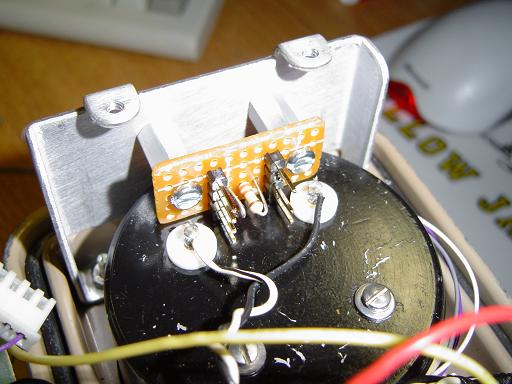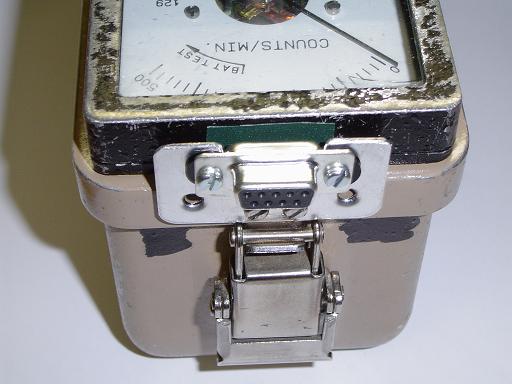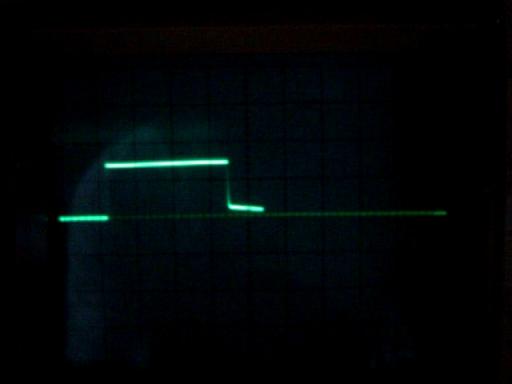
| IEC Fusion Reactor Mark 3 Neutron Detector |  |
 |
 |
 |
 |
 |
 |
 |
| Overview: Neutron detector for measuring neutron output from fusor. The fusing of deuterium produces fast neutrons with an energy of 2.45 MeV. The detection and quantification of neutron output from an IEC fusor is critical for proving that fusion is occurring. Since neutrons have no charge, they can not be counted by conventional instruments that detect the presence of ionizing particles, such as geiger counters or ionization chambers. Neutrons must be quantified by their interaction with other nuclei in a detection system. For these interactions to occur, neutrons must be thermalized (slowed down) to the point where they can interact with other nuclei. Neutrons can be thermalized by collisions with protons in a hydrogen rich plastic moderator such as HDPE. As fast neutrons enter the moderator they scatter off the protons, loosing energy in the process. Neutrons passing through the detector tube that are sufficiently slow can be detected and recorded. A BF3 (Boron tri fluoride) detector tube enriched to 99% B10 is used to detect neutrons produced in fusion reactions. When neutrons enter the detector tube they interact with the B10 in the following way: B10 + n => Li7 + a. The charge on the alpha particle generated in the reaction produces a 1-3mV signal across the input of the counter that is amplified and recorded. |
|
Counter: Ludlum model 12 (older version)
|
|
Counter:
|
|
Neutron Detector Tube: N Wood enriched BF3 (99% Boron 10). Tube detects thermal neutrons by the reaction B10 + n => Li7 + a. The charge on the (Li7 / a) produces a 1-3mV signal across the input of the counter that is amplified and recorded.
|
|
Neutron Detector Tube: MHV connector (HV BNC type) is connected to counter. |
|
Ludlum Circuit: When a count is recorded, and audio is on, pin 1 of the CD4093 (IC below speaker connection) is pulled high for 15ms by the CD4098 (below CD4093). This enables the audio oscillator that chirps then a count is detected. The ludlum circuit at tapped at this pin and the signal is connected to a custom circuit. |
|
Circuit Design: Wire harness connecting the custom circuit with the main ludlum board has signal and ground lines twisted to reduce emi interference. The signal wire is soldered to the pin 1 pad of the CD4093. The ground wire is soldered to the ground bus where it joins the ground terminal of the piezo speaker. Resistor ensures proper circuit operation even if output connector is shorted. Zener diode (5.1v) clips any portion of the signal above 5v. In this configuration, voltage never exceeds 3v on the output due to impedance characteristics of the connected counter and scope. |
|
 |
Circuit Modification: Count enters board through the connector on the right and is connected in series with a 330k resistor. Output pulse is then regulated by a zener diode. Pulse exits through the connector on the left. Four wire connector runs out under the meter face where it is connected to a db9 connector. |
 |
Connector Port: DB9 allows connection to external digital scaler. |
Digital Scaler: Count pulses from ludlum are recorded on HP5316B counter set in totalize mode. |
|
 |
Pulse Capture: Output pulse asserted on external connector. Scope is set at 5ms per div, 2v per div. Pulse is 3v in amplitude and lasts 15ms. |
Neutron moderator mount (2/06/2008) Mounts HDPE moderator to reactor core |
|
Neutron moderator (2/06/2008) HDPE moderator thermalized neutrons, thereby allowing detection with the BF3 detector tube. |
|
Neutron moderator (2/06/2008)
|
|
Neutron detector (2/06/2008) HDPE moderator, moderator mount, and detector tube. |
|
Neutron detector (2/06/2008) Detector tube is inserted and mounting brackets connect to moderator . |
|
Neutron detector (2/06/2008) Detector head is mounted on reactor core. |
|
Detector test (2/06/2008) Detector is tested with californium neutron source. Positioned on thick axis. |
|
Detector test (2/06/2008) Detector is tested with californium neutron source. Positioned on thin axis. Detector is observed to be insensitive to neutron flux direction, therefore rotation about long axis will not alter calibration. |
|
Detector test (2/06/2008) Detector is tested with californium neutron source. Positioned on long axis. |
|
Detector test (2/06/2008) Detector is tested with cesium-137 gamma ray source, detector is completely insensitive to gamma rays, therefore x-ray emissions from reactor will not produce false neutron counts.
|
|
Detector test (2/06/2008) Detector is tested shielded with 1.5" of lead and exposed to neutron source. |
|
Detector test (2/06/2008) Shielding is removed; detection rate remains unchanged, therefore since neutrons are not absorbed/scattered by lead, the presence of the 1" thick stainless steel conflat flanges in front of the detector will not alter calibration. |
|
Detector test (2/06/2008) Moderator is removed; detection rate decreases substantially. Detector tube in only sensitive to thermal neutrons scattered from moderator, residual detection rate is from neutrons scattered from the floor. |
|
Detector test (2/06/2008) Moderator is repositioned on other side of neutron source, count rate increases. Neutrons are thermalized and back scattered off of moderator, thereby increasing detection rate. |
|
Detector calibration (2/06/2008) Detector is calibrated with californium neutron source against calibrated neutron meter. Final calibration is preformed with plutonium beryllium neutron source (not shown).
|
|
Detector calibration (2/06/2008) The detector was then calibrated with a 5Ci plutonium beryllium neutron source (not shown). Both the calibrated neutron meter and neutron counter for the mark 3 reactor were placed 1m from the 5Ci PuBe neutron source and rose rate was recorded over a 1min period.
Using the conversion from dose rate to neutron flux:
|
|
Useful links: |
|
By attempting to reproduce any experiments or devices listed on this domain in part or in whole, you agree to hold me harmless against any lawsuit or liability. Copyright © 1998 - 2005 by Andrew Seltzman. All rights reserved. |
|
| Contact me at: admin@rtftechnologies.org | |